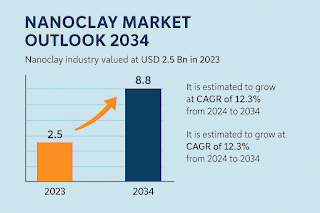The insurance landscape is undergoing a profound transformation, driven by technological innovation and evolving consumer expectations. At the forefront of this shift is the Business-to-Business-to-Consumer (B2B2C) insurance model, a collaborative approach that leverages established business relationships to deliver insurance products directly to end-consumers. This market, already valued significantly in 2023, is poised for substantial growth through 2031, promising a more integrated, convenient, and personalized insurance experience.
Dive Deeper into Data: Get Your In-Depth Sample Now! https://www.transparencymarketresearch.com/sample/sample.php?flag=S&rep_id=79708
Understanding the B2B2C Model
Traditionally, insurance has been sold through direct channels or independent brokers. The B2B2C model introduces an intermediary business (B2) between the insurer (B1) and the consumer (C). This "B2" can be a diverse range of entities: an e-commerce platform, a bank, a car dealership, a travel agency, a utility provider, or even a professional association. The core idea is to embed insurance offerings directly into a customer's existing purchase journey or service interaction, making it a natural and often immediate consideration.
For example, when you buy a new smartphone, the option to purchase device protection insurance at the point of sale is a B2B2C interaction. Similarly, booking a flight might offer travel insurance, or a car purchase could include an embedded vehicle insurance package. This seamless integration enhances convenience for the consumer and broadens the reach for insurers, tapping into trusted relationships the intermediary business already holds with its customer base.
Market Trajectory and Projections
The global B2B2C insurance market was valued at USD 777.8 million in 2022 and is projected to reach USD 1.8 billion by the end of 2031. The market is expected to grow at a robust CAGR of 10.0% from 2023 to 2031, driven by the increasing adoption of digital distribution channels, strategic partnerships between insurers and non-insurance entities, and the rising demand for embedded insurance solutions.
North America has historically been a dominant region in this market, and it is expected to maintain a significant share, with projections suggesting it could reach US$1 trillion by 2033. However, Asia-Pacific is also witnessing rapid growth due to increasing digitization, urbanization, and a burgeoning middle class with rising disposable incomes.
Key Drivers Fueling Growth
Several factors are propelling the B2B2C insurance market forward:
- Customer-Centricity and Convenience: Modern consumers demand ease and personalization. B2B2C models deliver this by offering relevant insurance at the "point of need," streamlining the purchase process and building trust through association with a familiar brand.
- Digital Transformation and Technology Adoption: The widespread adoption of digital platforms, mobile applications, AI, machine learning, telematics, and big data analytics is revolutionizing insurance distribution. These technologies enable personalized offerings, efficient underwriting, improved risk assessment, and seamless claims processing, all crucial for the B2B2C model's success.
- Expanded Market Reach for Insurers: By partnering with businesses across diverse sectors (automotive, retail, travel, banking, utilities), insurers can access new customer segments that might otherwise be difficult to reach through traditional channels.
- New Revenue Streams for Intermediaries: For non-insurance businesses, offering embedded insurance products presents an attractive opportunity to diversify revenue streams, enhance their value proposition, and foster greater customer loyalty.
- Demand for Personalized and Niche Products: The B2B2C model facilitates the creation and distribution of highly tailored insurance solutions, catering to specific needs and risk profiles that traditional blanket policies might miss. This is particularly evident in segments like health, property, and specialized coverage for the gig economy.
Challenges and Opportunities
Despite its promising outlook, the B2B2C insurance market faces challenges. Regulatory compliance, data security, and the need for seamless integration of technological infrastructures between partners are crucial considerations. Building and maintaining trust between all parties – the insurer, the intermediary, and the consumer – is paramount.
However, the opportunities far outweigh the challenges. The shift towards embedded finance, the increasing demand for on-demand and micro-insurance, and the continuous advancement of insurtech solutions create fertile ground for innovation. Insurers that invest in robust digital ecosystems, foster strong partnerships, and prioritize data-driven customization will be well-positioned to capitalize on this dynamic market.
Buy this Premium Research Report: https://www.transparencymarketresearch.com/checkout.php?rep_id=79708<ype=S
The Future is Collaborative and Embedded
The B2B2C insurance market is not merely a trend; it represents a fundamental evolution in how insurance is perceived and consumed. As consumers increasingly rely on digital channels and value integrated services, the collaborative B2B2C model will continue to flourish. The period from 2023 to 2031 will likely witness further diversification of partnerships, more sophisticated technological integrations, and an even greater focus on hyper-personalized insurance solutions, making insurance an almost invisible, yet essential, component of everyday life.
Want to know more? Get in touch now. -https://www.transparencymarketresearch.com/contact-us.html









